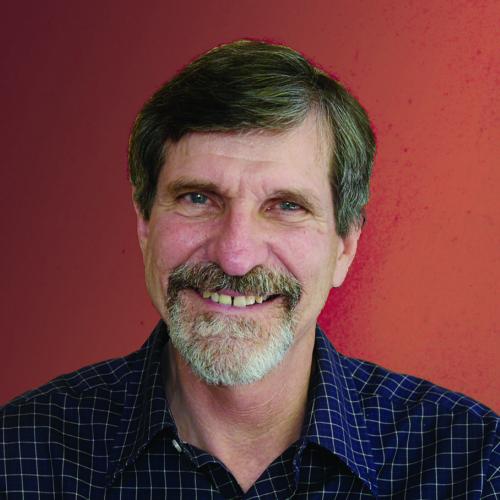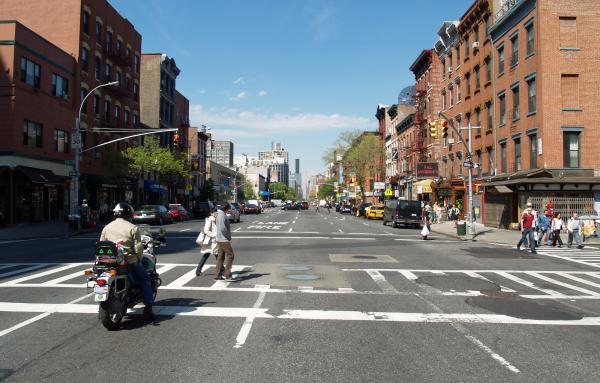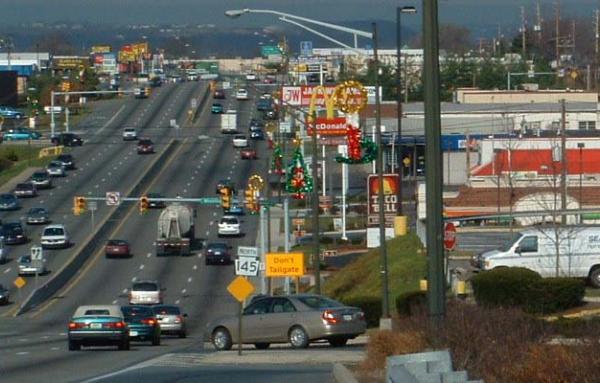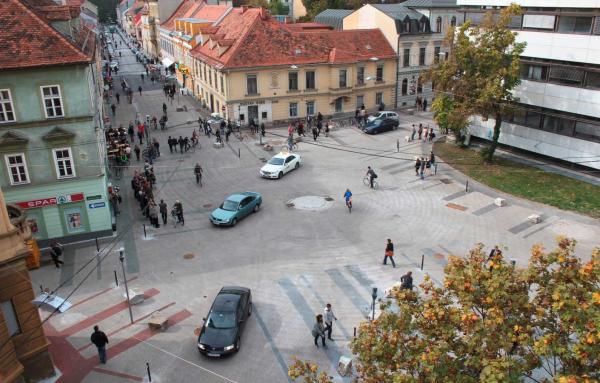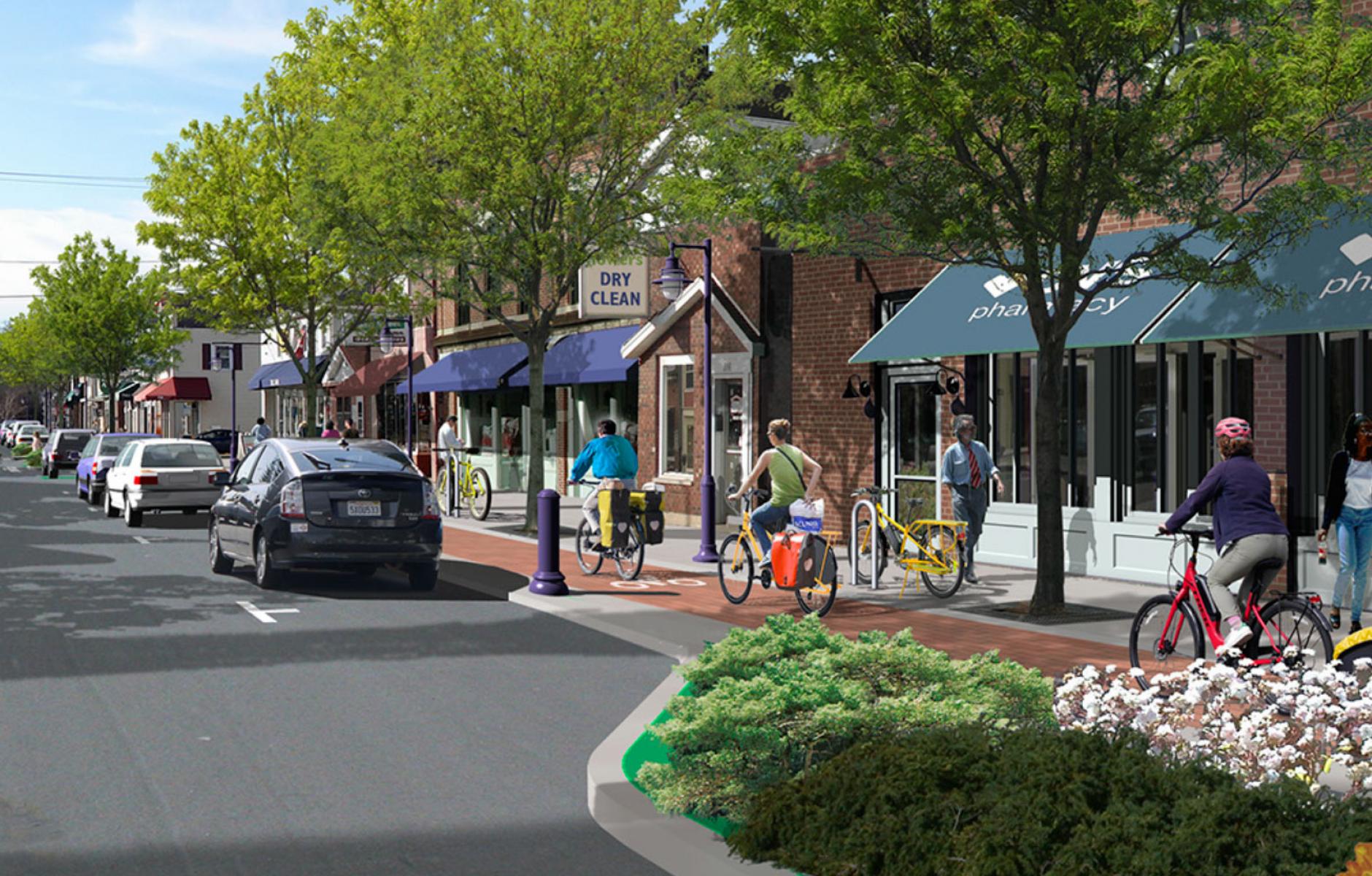
Can an electric bicycle take the place of a car?
These days I’m riding an electric bike. I didn’t intend to. I believed that a decarbonized future would be ushered in by electric cars. I bought one. I wanted one that I could throw a bicycle in the back. The car was expensive, even with the tax incentives. But boy was it quiet! And the acceleration! I could show up young males in their thunderous muscle cars with my superior but silent torque.
There was much to learn going from a gas-powered car to an electric one: J1772 and CHAdeMO charging, finding available charging stations, peak and non-peak charging, electric vehicle maintenance. Gas-powered cars have no future; electric cars do. Much of sprawl America will be irredeemable on a heating planet without solar panels on roofs and EVs in driveways.
But for me the electric car experience ended in a collision in an intersection in Berkeley. My electric car was totaled. No one was seriously hurt, but the car became a memory, the end of a learning experience. Cars are an expensive gamble. Losing a transit pass or a carbon-fiber road bike hurts, but it is chump change to say the least compared to losing a car.
I’m now entering a new course of learning: what it means to live car-free in America … but still electrified. I’m warily moving forward. I love my new e-bike (electric bike). I’m not going back to vehicles spewing foul gases, no matter how stylish—they are beauty queens with digestive disorders. My electric bike is effluvium free. The e-bike takes me farther than my old bike. Instead of going x miles, I quickly go 2x or 3x; four to nine times the area of the city is laid at my pedaling feet.
Electric bikes open bicycling up to more people
In the San Francisco Bay Area where I live, topography varies a lot. I’m sixty-eight and appreciate my e-bike’s four levels of pedaling assist. Topography becomes almost irrelevant. Bicycling at my age shouldn’t be considered exceptional. Among Tokyo residents 60 to 69 years old, 36 percent get on a bicycle on a daily basis. For people 70 and older, it’s 22 percent1 In the UK, 62 percent of electric bike sales have been to people over the age of 55.2 By making bicycling easier in varied terrain, electric bikes could be a breakthrough in the United States, proving false the belief that bicycling is only for the young.
Before I bought my e-bike, I told my wife (in her mid-fifties) that I wanted to test-drive one. We’re talking a pedal assist e-bike. You still have to pedal—you don’t just twist a throttle. Janet is a dedicated bicyclist who goes all over the East Bay in her light-weight road bike. I considered just shelling out for a lighter bike and took her bike out for a spin up some hills. It wasn’t easy. It convinced me I needed to try an e-bike.
I took Janet along for a visit to the bike shop. The staff gave me an e-bike to test on the streets of Berkeley. Janet on her conventional bike and I on the e-bike set out uphill to College Avenue. I blew right past her. When we got to College Avenue she asked to go back to the shop and request another e-bike. From the bike shop we both bicycled up to the Claremont Hotel. Topography melted away. We were convinced. Back at the shop we bought two e-bikes. We would try living car-free. Our two e-bikes each cost in the $2,000 to $2,500 range. We had the store install Pinhead wheel and seat locks to deter thieves. We also bought a Burley cargo trailer for hauling big stuff—e.g. bags of mulch, microwave ovens, etc. Electric bikes seem expensive but when you compare their costs to car ownership, they’re dirt cheap.
According to the American Automobile Association, the total annual ownership costs of the average new car in 2019 (payments, gas, licensing, insurance, maintenance, depreciation) was $9,282.3 Since automobile ownership costs remain high over time, owning a car can cost $20 to $25 per day for years. The one-time purchase of an e-bike, over time, could cost less than $1.50 per day.
Is the built landscape ready for electric bikes?
But my e-bike, by taking me farther with less effort, has exposed me more to the shortcomings of the American built landscape. E-bike technology is so promising, but most of urban or suburban America is sadly unaccommodating to this new opportunity. Its full potential awaits improvements to streets.
In the United States, the rails-to-trails movement has produced exciting greenways packed with walkers and bicycle riders. If I didn’t know better, watching the activity on the greenway near my house would lead me to believe that bicycling is taking off big time as transportation. Throughout much of the day, the bicycling traffic there looks like what you’d expect in the Netherlands. But just as motorists cannot be happy with just one good street, it’s absurd to expect a beautiful rails-to-trails path to herald the arrival of car-free living. Bicycle riders need multiple good streets for the tasks of daily living, and need those streets to interconnect for efficient in-town travel.
I recently received an email from a bicycling advocacy group asking me to take five minutes to describe my bicycling experience. First question: which do you use a bicycle for most: commuting, recreation, or both? The absence of shopping as a use was startling. Over the decades I spent a lot of time in Awaji, a neighborhood in Osaka where my late wife’s family lived. In Awaji the use of bicycles for errands and shopping is high and most people get along fine without a car. My mother-in-law, during her long life, never drove a car. The Japanese are not more athletic than Americans. They bicycle because it is easy and practical. Shopping by bicycle is common in Japan, but rare in the United States.
Shopping by bicycle puts America’s street systems to the test. Commuters are happy with one good route. Recreational bicycle riders take whichever routes are enjoyable—destinations are not critical. Running errands and shopping put bicycle riders on multiple routes to various needed destinations. But in America, numerous neighborhood obstacles are thrown in the way of bicycle riders and useful destinations: meandering street layouts, dysmorphic block shapes, monster-sized intersections, dead-end cul-de-sacs, one-way streets. The one thing that provides straight, uninterrupted routes to shopping are large, auto-only arterial streets, which every sprawl community has. In post-World War II America, four- to six-lane streets with fast posted speed limits are where commercial establishments locate. Even older avenues have been remade like these suburban arterials in pursuit of higher speeds and greater traffic volumes.
The result of designing these streets with these objectives is that they are where the great majority of walking and bicycling deaths occur. According to the National Highway Traffic Safety Administration, if you get hit by a vehicle going 20 mph, you have a 5 percent chance of dying; 40 percent if hit at 30 mph; and 80 percent if hit at 40 mph.4 These speeds are common on arterial streets. According to the California Office of Traffic Safety, 72 percent of fatal bicycle accidents occur on principal and minor arterials (principal 48 percent, minor 24 percent).5
Although the location of useful retail and services, these arterials, as presently configured, are just too dangerous to bicycle riders (other than fearless young males). Historically, urban avenues were embedded in street grids so even if you didn’t want to ride on the avenue, you could ride on a parallel street. There is no such certainty anymore. The modern suburb is not built on a grid. To avoid the arterial, bicycle riders are forced to confront the disorder of neighboring sprawl streets. (Figures 1, 2 and 3)



Protected bike lanes
Progressive cities now see tired old arterials lined with big parking lots and boarded-up stores as opportunity sites for transit-oriented development and multi-unit housing. (Transit service is commonly already in place on these streets.) My community adopted a form-based code for its arterial. (A form-based code is a form of development regulation designed to restore community walkability—a big improvement over conventional zoning.) The city quickly saw five housing projects go in the avenue corridor with another eight in various stages of planning or construction. The form-based code also included protected bike lanes (also known as separated bike lanes or cycle tracks) for the big street. Protected bike lanes provide a physical barrier between bicycle riders and fast-moving cars. (Figure 4)
Protected bike lanes make non-automotive travel on an arterial safe—that goes for wheelchairs and scooters as well as bicycles. People can live on the avenue and take bicycles/wheelchairs/scooters on the protected bike lane to fulfill daily shopping and service needs—a perfect marriage of avenue housing with avenue commerce. My community’s big four-lane street has most everything a car-free resident would need—banking, groceries, coffee houses, gyms, dentists, urgent care, restaurants, copy shop, florist, drug store, sports equipment, clothing, haircutting, cleaners, post office, car rental, and more—but with no protected bike lane these assets are challenging to access safely without a car.

The safe coordination of housing and businesses is particularly needed in my community since the city reduced the parking requirements for new housing construction. You can’t encourage residents to go car-free without giving them nonautomotive means to get to stores and services. Some transit advocates claimed that the bus service on the avenue could take people to stores. But given that the stores and services are not bunched close together, running errands at multiple locations means spending a lot of time waiting at bus stops. The truth is that the future of mobility will be multi-modal: transit, biking, walking, scooters, car-share, Lyft. Bicycles on the avenue would be the perfect access means for short distance errands—for that ATM visit, haircut, or visit to the grocery store—even more convenient than the much-exalted self-driving car.
Nevertheless, my city is having second thoughts about the protected bike lanes proposed in the form-based code. Instead the city is considering striped bike lanes. This would put bicycle riders next to car lanes with 35 mph vehicular traffic: no physical barrier between mothers taking children on the backs of cargo bikes and fast cars ... no seniors safely shopping on the avenue ... no children bicycling. The public works department argues that cars pulling into driveways would cross the protected bike lanes, producing dangerous conflicts, that parked cars shielding the bike lanes would obstruct sight lines for the turning cars. Yet many of those driveways will go away as development adhering to the form-based code removes them. Without safe non-auto circulation on the avenue, residents of the new housing will rethink their new car-free lifestyle.


Figure 5: Protected bike lanes, not conventional unprotected bike lanes, can transform auto-arterials into avenues where housing and commerce work together.
Bicycle-friendly is also business-friendly
I don’t live on the avenue, but that’s where businesses I want to patronize are—if it was safe. Big auto-only arterials are not just dangerous to pedestrians and bicycle riders, they handicap small businesses by discouraging these potential patrons from coming. People passing by at highway speeds are not an ideal customer base. Who does well? Big-footprint stores with big parking lots and big pylon signs. That means large chain stores, not local entrepreneurs.
Customers arrive by multiple means, yet surveys show that business owners repeatedly over-estimate the percentage of their customers arriving by car and underestimate customers arriving by walking, bicycling and transit. For example, UK researchers asked 126 merchants in Bristol, England, to estimate how many customers arrived by car. The retailers guessed 41 percent. The reality was 22 percent.6 The data will vary by street and town, but the perception problem is common.
Slower auto speeds, generous sidewalks, and protected bike lanes have proven to be good for businesses after the improvements have been made, but convincing business owners and political leaders before is difficult. Studies of large urban streets in Portland, Los Angeles, New York, Toronto, Vancouver, San Francisco, and Seattle, where new bicycling infrastructure was incorporated, bear out the benefits for local businesses. Although services may see no significant change in business—how often do you need to get your teeth cleaned or your hair cut?—bicycle riders can outnumber motorists as regular repeat customers at local-serving restaurants and shops. Although they spend less per trip, bicycle riders patronize businesses more often on streets that welcome bicycles.7 A good example in the San Francisco Bay Area near where I live is Telegraph Avenue in Oakland. With the addition of protected bike lanes, retail sales increased by 9 percent in spite of the reduction of automobile travel lanes from four to two.8
So, bicycle and pedestrian infrastructure investments are good for business. It’s not hard to imagine why: Slow bicycle riders and walkers notice businesses more than fast motorists and can make impulse visits easier. By contrast, motorists who park in front of stores with big parking lots are more likely to patronize that one business and then leave. Some businesses fear that protected bike lanes involve removing on-street parking. A visit via Google Earth to Denmark, Netherlands, and Japan shows little on-street parking. In those countries, as bicycle riding became more popular, roadway for cars was narrowed to accommodate greater bicycle usage. Many American arterials are so wide that retaining parking lanes while adding protected bike lanes would not be difficult.
American shoppers have their own perception problems regarding the potential of bicycles. They think they need the trunk space of a car to carry purchases home. Yet watch shoppers exit from stores—it’s rare that they are carrying more than one or two bags. A pannier or two on a bike can handle that. Going electric makes hauling larger loads easy. If you attach a lightweight two-wheel trailer, then hauling six bags of groceries or a bunch of potted plants is not even hard. Cargo bikes are seeing dramatic sales increases and can be used to haul both goods and small children. If a cargo bike or bike trailer still isn’t adequate for hauling that 60” plasma screen TV home, then have the store deliver it.

Low-carbon avenues
E-bikes move you places easier, farther, and quicker. The growth of e-bike sales in Europe is phenomenal. According to Cycling Industries Europe CEO Kevin Mayne: “There has been an increase of 36 percent in Germany, with 980,000 e-bikes sold last year. We had predicted that it would take until 2024 before more e-bikes were sold in the Netherlands than [mechanical] bicycles, but that milestone was reached last year.” An industry group predicts sales of 100 to 150 million e-bikes in Europe over the next 11 years.9 When I go into bike shops in the San Francisco Bay Area, I see customers front and center quizzing store personnel about their e-bike offerings.
According to the 2009 National Household Travel Survey, 28 percent of all trips in the United States are for 1 mile or less.10 If these short trips are largely for errands, including shopping, and e-bikes can easily handle transporting purchases, including heavy liquid groceries or small appliances—then the home-to-commercial arterial trip can easily be fulfilled without a car. If a carless commute to work is achieved and cars are rented as needed for weekend trips, then true freedom from car ownership can be achieved and that $9,282 per year car cost can be banked.
The growing popularity of e-bikes will fuel greater demand for better bicycling infrastructure. People will only get more frustrated that auto-only arterials are keeping them from accessing the daily stores and services they need. Incorporating protected bicycle lanes on large arterial streets makes good housing, economic, and environmental sense. If cities are serious about warding off the extreme effects of climate disruption, then alternatives to the car must be welcomed. The utility of bicycles for errands and shopping needs to be recognized. The transformation of auto-only arterials into car-optional housing, business, bicycle, and transit avenues, is where the low-carbon future of America will be on display.
1 John Pucher and Ralph Buehler, ed. City Cycling. Cambridge, MA: The MIT Press, 2012.
2 Daniel Boffey, “Older men on e-bikes behind rising death toll among Dutch cyclists,” The Guardian, April 25, 2018
3 AAA Automotive, “Average Annual Cost of New Vehicle Ownership,” 2019, www.aaa.com/autorepair/articles/average-annual-cost-of-new-vehicle-owner...
4 W.A. Leaf and D.F. Preusser, “Literature Review on Vehicle Travel Speeds and Pedestrian Injuries,” National Highway Traffic Safety Administration, 1999
5 California Office of Traffic Safety, “Bicycle Safety,” 2016, safetrec.berkeley.edu/sites/default/files/safetrecfactsbicyclesafety1.pdf
6 Eric Jaffe, “The Complete Business Case for Converting Street Parking into Bike Lanes,” CityLab, March 13, 2015
7 Ibid.
8 Oakland Department of Transportation, Telegraph Avenue Progress Report, January 2017
9 Carlton Reid, “100 Million Extra E-Bikes Purchases by 2030,” Forbes, April 11, 2019
10 The League of American Bicyclists, Highlights of 2009 National Household Travel Survey, 2010




